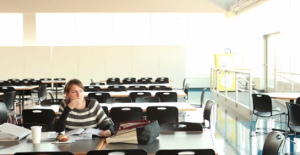
What do a designer and teacher have in common? Turns out there are a lot of similarities.
"Teachers design everyday. They structure all kinds of solutions," says Sandy Speicher from seminal design firm Ideo. "At any given moment, they’re designing a response to a student and how they bring out content in different ways so kids can understand it if they’re struggling. All of these are design decisions."
It's just a much a matter of how they perceive themselves. When Speicher explains her idea to teachers, she says "there’s this 'Aha,' this shift to realizing that they do the have power of changing the situation in front of them."
With the help of on-the-ground teachers, Speicher and her design colleagues at Ideo have come up with a toolkit, and an entire website called Design Thinking for Educators devoted to explaining how to use it, to help educators build the design process into their day.
The toolkit is meant to create a set of processes and methods used by professional designers that's been rewritten in the context of education and the school environment. Speicher hopes teachers who use the toolkit will eventually default to this way of design thinking for any situation that comes up -- in or out of the class.

